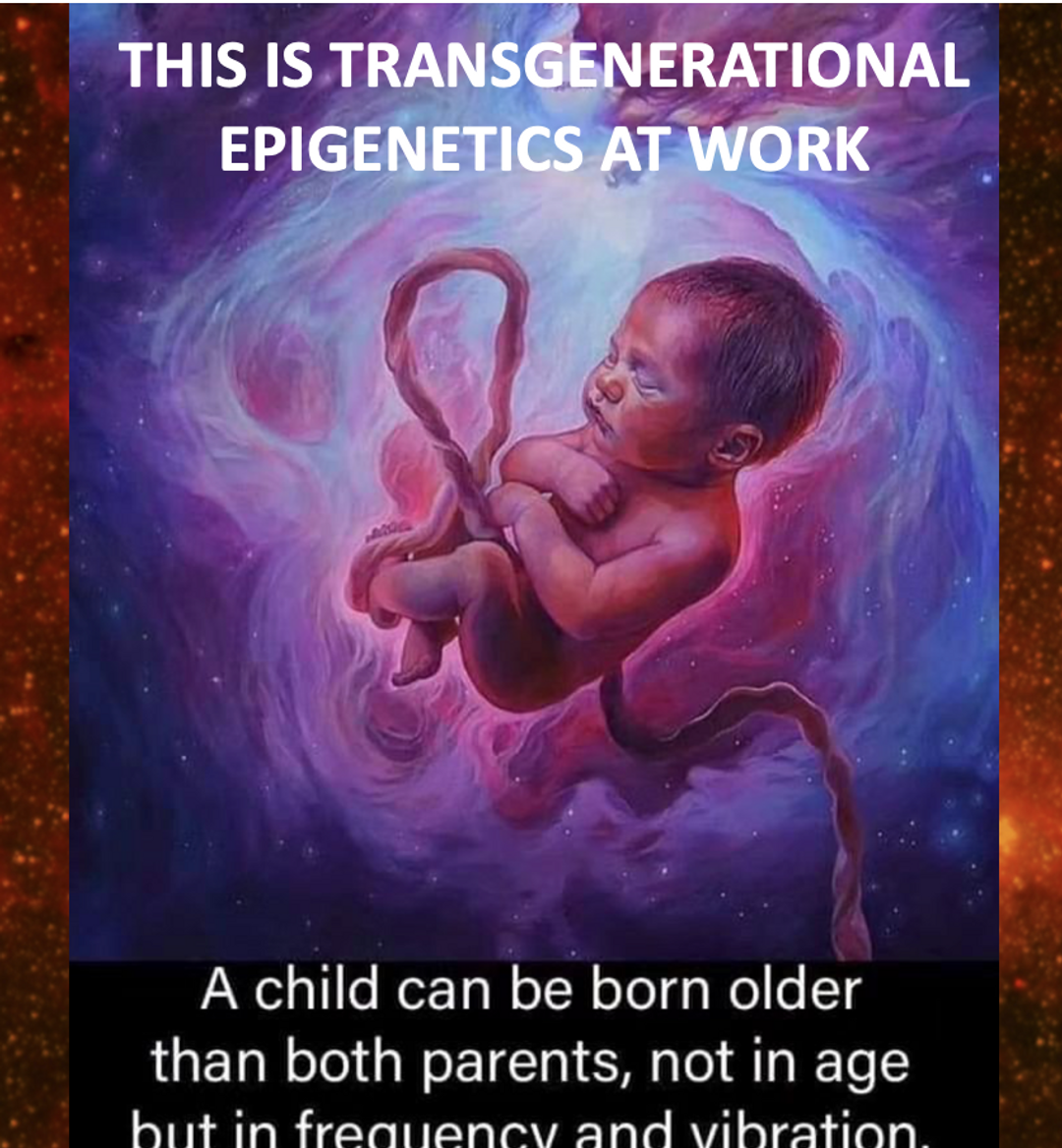
Humans assimilate light in many ways. Since we are in part of the Quilt that is teaching us how RBC porphyrins collect and communicate their information to and fro I want you to understand how a child can be born older than either of its parents when the egg and sperm they come from comes from a light stressed environment. How does it happen?
The last blog should have opened your eyes on why RBCs and anemia are extraordinary signals that tells us a lot about how optical information is communicated in complex eukaryotes. The mechanism of how children get cancers from their parents choices around light is exactly how astronauts get cancer from their choices of using light in space aberrently. Below is lecture I attended given by astronaut Robert Thirsk on my recent world tour with some of my Farm Clients to teach them more quantum biology one on one. Why did we pick this itinery as a way to teach? Because that is where the space guys who flew into massive nnEMF were. Their lives hold lessons we all need to learn about LIGHT STRESS and modern disease epidemics.
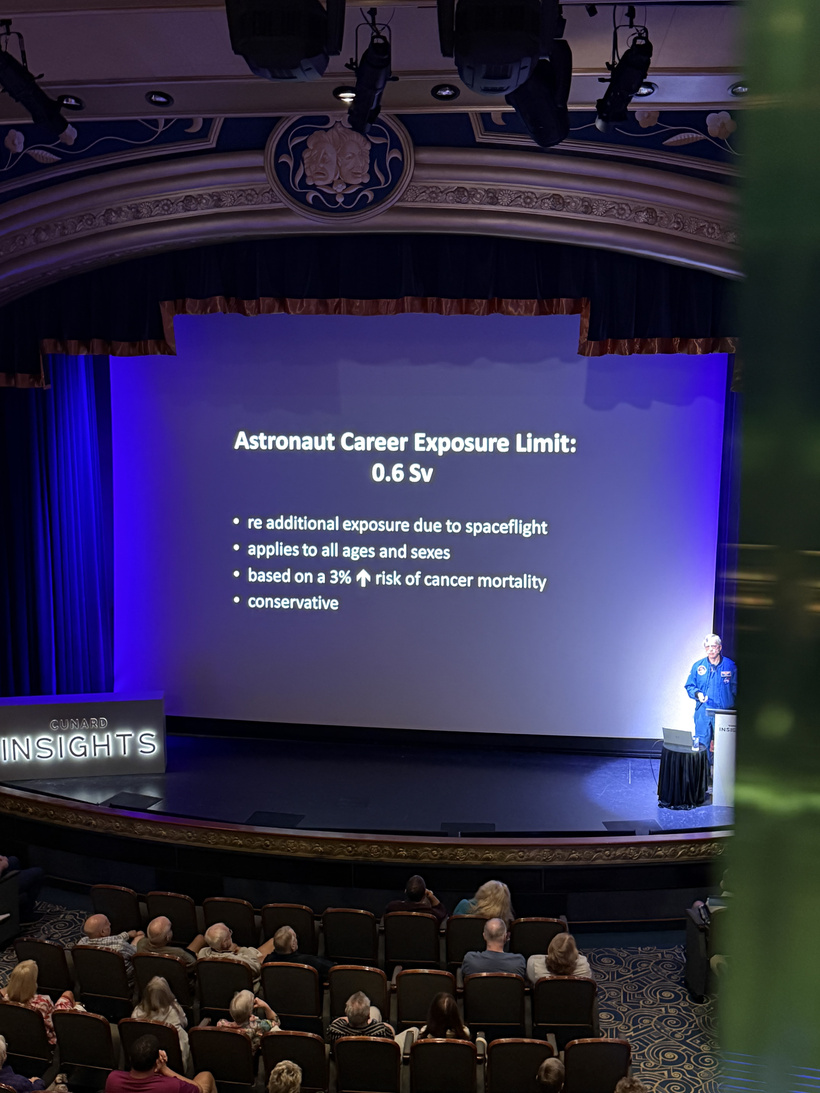
Bob served as crew commander for two space mission simulations: the seven-day CAPSULS mission in 1994, at Defense Research and Development Canada in Toronto, and the 11-day NEEMO 7 undersea mission in 2004 at the National Undersea Research Center in Key Largo, Florida.
In 1998, Bob was assigned by the Canadian Space Agency to NASA’s Johnson Space Center in Houston to pursue mission specialist training. This training program involved advanced instruction on both Shuttle and International Space Station (ISS) systems, EVA (spacewalking), robotic operations, and Russian language. He was a transition astronaut between the old Shuttle missions and the new ISS bases needed to get to Mars.
Within the NASA Astronaut Office, Bob served as a CapCom (capsule communicator) for the International Space Station program. In 2004, Bob trained at the Yuri Gagarin Cosmonaut Training Centre near Moscow and became certified as a Flight Engineer for the Soyuz spacecraft. He served as backup Flight Engineer to European Space Agency astronaut Roberto Vittori for the Soyuz 10S taxi mission to the ISS in April 2005. During this 10-day mission, Bob worked as Eurocom (European CapCom) at ESA’s Columbus Control Centre in Germany. In February 2008, Bob again performed Eurocom duties from Germany in support of ISS Expedition 16 crew activities.
Bob holds an Adjunct Faculty position at International Space University in Strasbourg, France. He works with educational specialists in Canada to develop space-related curriculum for grade school students. He encourages young Canadians to build their dreams upon a solid educational foundation and advanced skills.
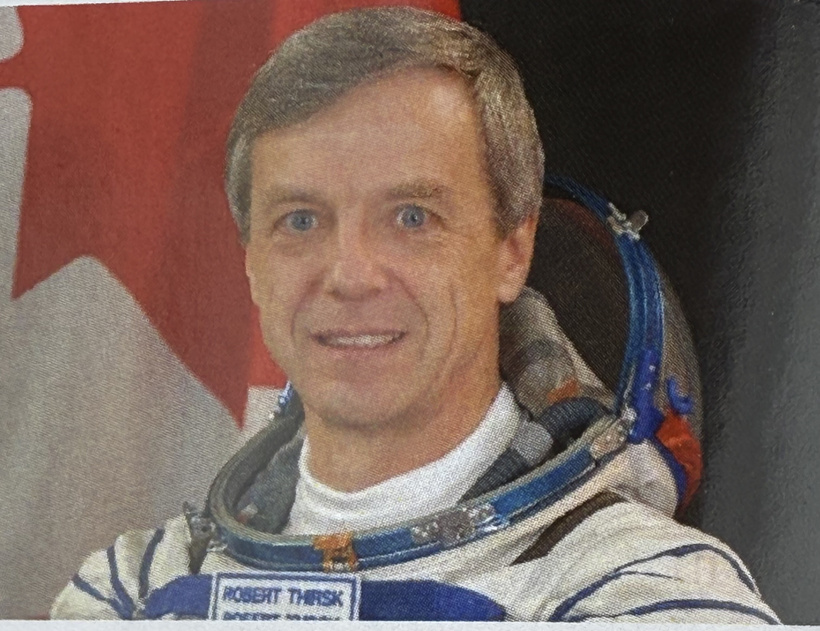
In June and July 1996, Bob flew as a payload specialist aboard Space Shuttle mission STS-78, the Life and Microgravity Spacelab mission. During this 17-day flight aboard Columbia, he and his six crewmates performed 43 international experiments devoted to the study of life and materials sciences. The life science experiments investigated changes in plants, animals, and humans under space flight conditions. The materials science experiments examined protein crystallization, fluid physics and high-temperature solidification of multi-phase materials in a weightless environment.
In 2009 Bob became the first Canadian astronaut to fly a long duration expedition aboard the International Space Station. He and two crewmates launched from the Baikonur Cosmodrome in Kazakhstan on May 27th 2009 aboard a Russian Soyuz spacecraft. When their Soyuz vehicle docked with the nearly-complete Station two days later, the ISS became home for the first time to a permanent crew of six.
As members of the ISS Expedition 20/21 crew, Bob and his five international crewmates performed an unprecedented amount of multidisciplinary research, complex robotic operations, and maintenance and repair work of Station systems and payloads. Following the undocking of his Soyuz spacecraft from the Station and landing back in Kazakhstan on December 1st, Bob Thirsk had lived and worked in space for another 188 days during this second voyage. I got a chance to spend time with him on this world tour to discuss the science of space travel and the limitations of humans in traveling to MARS. In his lecture, Bob told us that his eyes have become a large problem for his health since his days in space. He had no idea why. I did.
HOW DOES THE STORY OF OUR RBCs FIT THIS NARRATIVE?
The addition of the biophoton research on red blood cells (RBCs) and blood from the 2003 study “Biophoton Research in Blood Reveals Its Holistic Properties” by Voeikov et al. provides a critical layer to my photo-bioelectric hypothesis. This study highlights blood as a continuous source of biophotons, reflecting its electronically excited state driven by reactive oxygen species (ROS) reactions, and its role as a highly cooperative, non-equilibrium, non-linear system. Since RBCs have no mitochondria it should be surprising to new students of my work that blood can easily create biophotons since mtDNA is usually needed to make ROS and electronic states to transform matter to produce biophotons. This paper aligns with my existing framework, which emphasizes light-driven metabolism (Light > Food), the role of water dynamics, deuterium effects, and evolutionary adaptations post-K-T Extinction on Earth. It would be wise for me to remind you that human adult blood is loaded with deuterium. How does this square with my thesis?
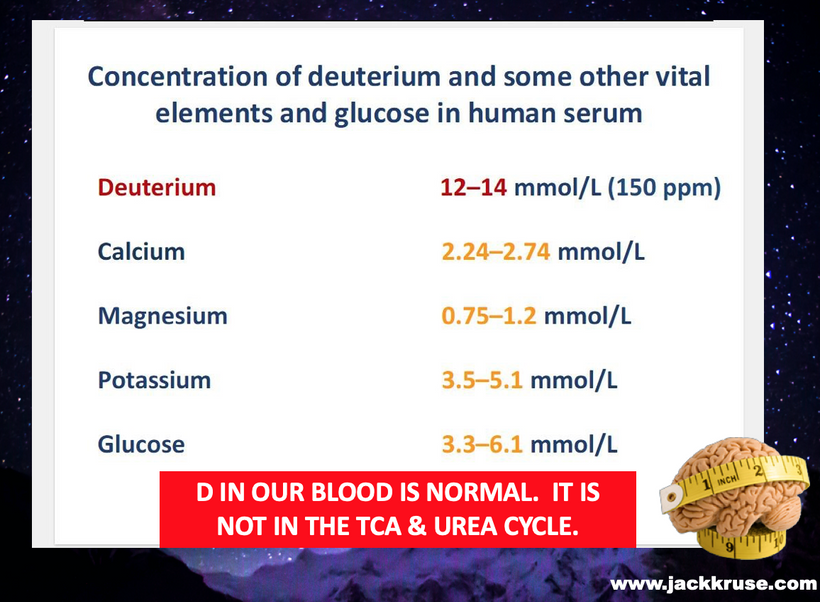
My photo-bioelectric hypothesis posits that nnEMF (non-native electromagnetic fields), ALAN (artificial light at night), poor sunlight, and geoengineering damage melanopsin, mtDNA, and heme proteins, reducing DDW (deuterium-depleted water) production, dehydrating melanin, and increasing electrical resistance (éR), leading to hypoxia, HIF-1α activation, Warburg metabolism, VP-ISR-GDF15 axis activation, and Vitamin A liberation disrupting heme nuclear genes Rev Erb- alpaha and beta which directly impact the key SCN clock genes called PER1/PER2. The K-T Extinction event link deuterium effects further shape mtDNA biophoton emissions and haplotype vulnerabilities.
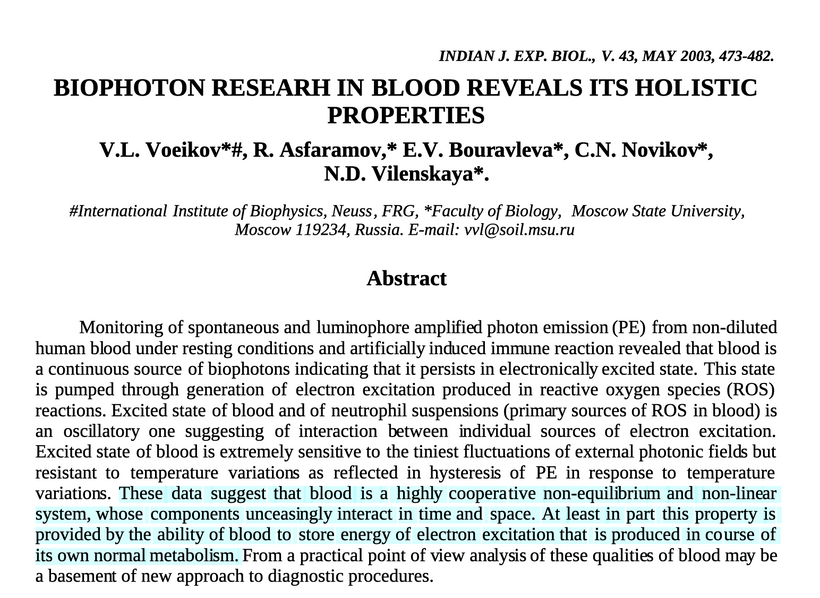
- Blood as a Biophoton Source:
Blood is a continuous source of biophotons, persisting in an electronically excited state due to ROS reactions (e.g., in neutrophils). This state is oscillatory, indicating interactions between electron excitation sources, and is highly sensitive to external photonic fields (e.g., nnEMF, ALAN) but resistant to temperature variations, showing hysteresis in photon emission (PE).
- Blood as a Non-Linear, Cooperative System:
Blood operates as a non-equilibrium, non-linear system, with components interacting in time and space. This cooperative nature allows blood to store energy from electron excitation, supporting its role in systemic biophoton signaling and cellular communication.
- Link to Heme Proteins and Regenerative Currents:
Heme proteins in RBCs (e.g., hemoglobin) are key to ROS generation and biophoton emission. Under hypoxia, hemoglobin oxidizes to methemoglobin, blocking oxygen binding but enabling Robert Becker’s pico-to-nanoampere regenerative current for de-differentiation. nnEMF/ALAN disrupt this, increasing methemoglobin and éR, while methylene blue can sometimes counters this by enhancing NO to stop ATP production and lowering éR. Interestingly ROS and RNS also have a paramagnetic footprint in this dance.
- Connection to Deuterium and Biophotons:
High deuterium in mtDNA (post-K-T) widens biophoton spectra, reducing ultraweak UV biophotons. Blood’s biophoton emissions, driven by ROS, are similarly affected by deuterium levels, with nnEMF/ALAN exacerbating this by increasing ROS and deuterium retention, driving Warburg shifts.
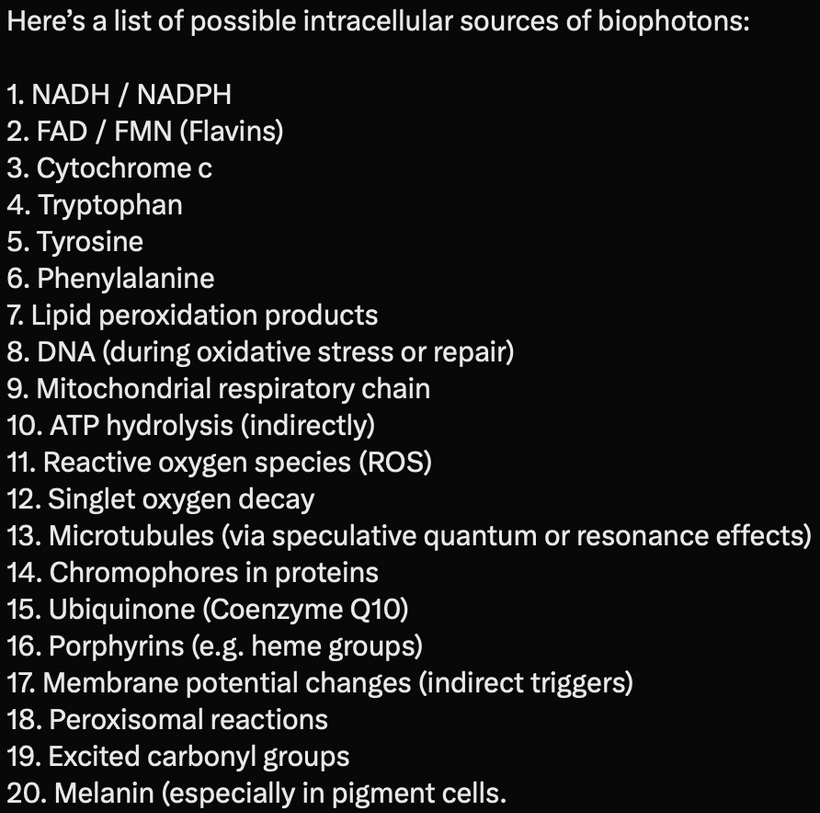
Evolution of Light, Deuterium, Biophotons, and Blood’s Role
Pre-K-T Era: Anaerobic Life and High Deuterium Dominates Earth
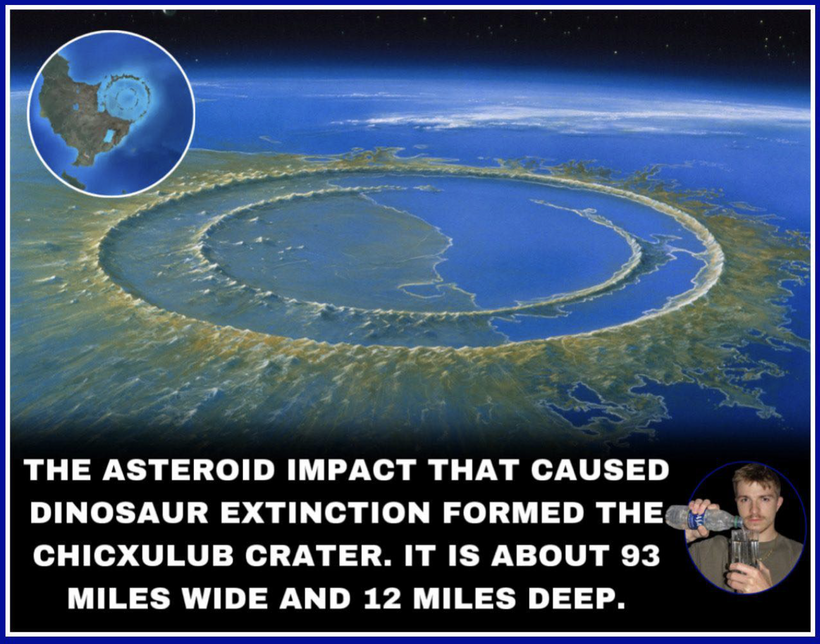
The hole in the Earth crust in Mexico is massive and all that Karst was elevated into the atomosphere in a few minutes to block the sun, lower temperatures, and create a light catastrophe that forced all life that would come after it to adapt. Those changes remain in every eukaryote since this event. Humans are subject to this situation.
Environment: Prior to the KT event, the Earth’s atmosphere had low oxygen for billions of years, and life relied on glycolysis (high deuterium). Blood precursors in early organisms (e.g., LUCA) emitted biophotons with a wide spectrum, lacking ultraweak UV biophotons, reflecting high entropy (per Shannon’s 1948 information entropy). ROS reactions in primitive heme proteins (e.g., myoglobin) generated biophotons, but high deuterium limited information transfer efficiency.
Biochemicals: Tryptophan-derived molecules (e.g., melatonin) absorbed UV (150–400 nm), supporting early circadian timing. Blood’s role as a biophoton source was minimal due to low oxygen and ROS.
K-T Extinction: Deuterium Surge and mtDNA Stress combine to force life to adapt
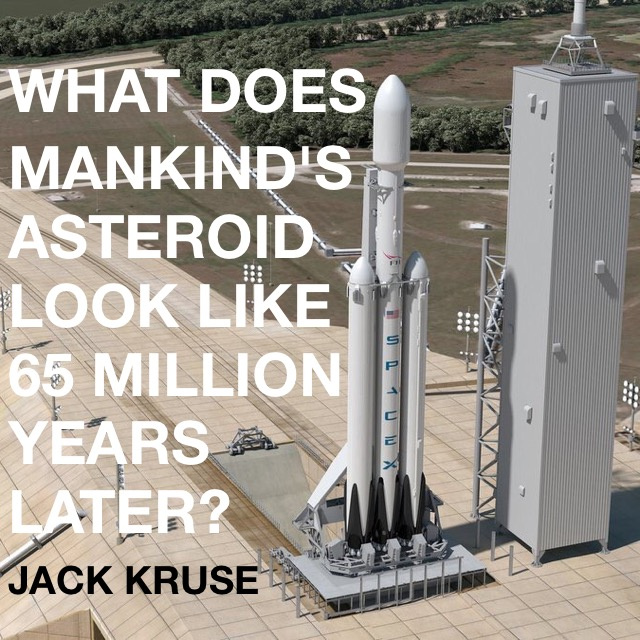
Environmental Shift: The K-T Extinction (66 million years ago) reduced UV light, altered precipitation, and increased deuterium in water and mtDNA. Blood’s biophoton emissions widened, reflecting increased ROS from stressed heme proteins (e.g., hemoglobin precursors). This high-deuterium state drove apoptosis innovation via cytochrome c oxidase, removing afflicted mtDNA.
Evolutionary Pressure: Organisms favored glycolysis (high deuterium, wider biophoton spectrum), but blood’s cooperative nature (non-linear system) began to emerge, storing energy from ROS-driven electron excitation to support systemic signaling under stress.
Post-K-T Recovery of Eukaryotes: Normoxia, Ultraweak UV Biophotons, and Blood’s Role
Sunlight Return: UV light returned, stimulating neuropsin, mTOR, and leptin signaling, supporting normoxia and TCA cycle dominance. Cytochrome c oxidase evolved to reduce deuterium in mtDNA, favoring ultraweak UV biophotons (low-entropy, high-information signals per Popp). Blood’s biophoton emissions, driven by ROS in neutrophils and heme proteins, also shifted toward ultraweak UV, enhancing systemic communication.
Biochemical Selection: Melatonin, NAD⁺, and catecholamines (tryptophan-derived) became key semiconductors, absorbing UV to regulate circadian clocks (PER1/PER2). Heme proteins in the nucleus (Rev erbs) and in RBCs stabilized with green light, and blood’s non-linear system amplified biophoton signaling, supporting oxygen delivery and regenerative currents (per Becker).
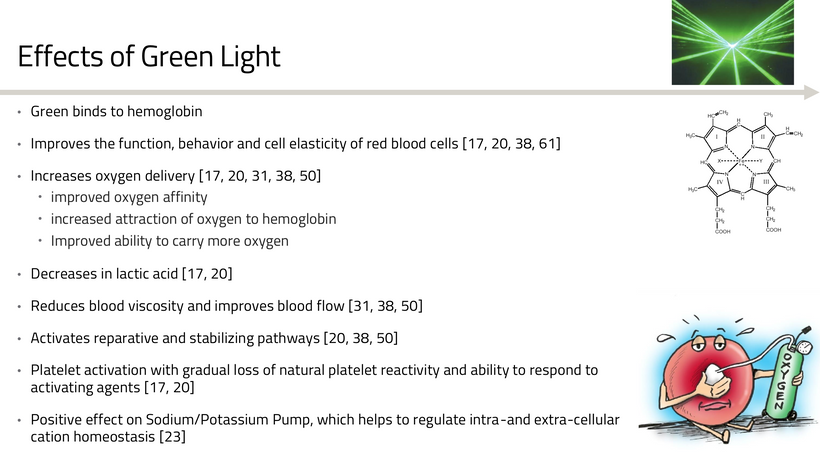
Normoxic Earth: Haplotype Divergence and Blood’s Vulnerability
Haplotype Variations: Mitochondrial haplotypes diverged based on deuterium retention and biophoton profiles. Haplotypes with lower deuterium (e.g., H+) favored TCA cycle use, ultraweak UV biophotons, and low-entropy states, reducing disease risk. Haplotypes with higher deuterium (e.g., T2b-like) retained Warburg tendencies, increasing éR, heteroplasmy, and disease phenotypes. Blood’s biophoton emissions reflected these differences, with high-deuterium haplotypes showing wider spectra and higher ROS.
Modern Disruption: nnEMF/ALAN mimic pre-K-T darkness, increasing deuterium in mtDNA and blood, widening biophoton spectra, and driving Warburg shifts. Blood’s sensitivity to photonic fields (e.g., nnEMF) disrupts its cooperative state, increasing methemoglobin, ROS, and éR, exacerbating disease in vulnerable haplotypes like the 19-year-old with RP.
Decentralized Thesis Framework
Core Hypothesis: nnEMF, ALAN, poor sunlight, and geoengineering damage melanopsin, mtDNA, and heme proteins everywhere to make oxygen a toxin, reducing DDW, dehydrating melanin, and increasing éR, leading to hypoxia, HIF-1α activation. The picture below makes the link of hypoxic Earth (GOE) to normoxic Earth of today. In the GOE version of Earth the Warburg metabolism was favored to prevent oxygen damage and this remnant of optical signaliing is seen in today’s Vasopressin-ISR-GDF15 axis activation by aberrent light. It is also deeply associated with Vitamin A liberation from opsins disrupting Rev erb alpha and beta and PER1/PER2. Excited oxygen in the early GOE atmosphere released red and green light from its interactions and these two colors of light became important for hemoglobin stabilization and destabilization when it came to carrying oxygen to and fro to supply mitochondria. This is shown on the slide below. You can also see how hypoxia induced factor 1 and the PER2 link.
The K-T Extinction event was a LIGHT event that interrupted the sun and this increased deuterium usefulness in the circulations of early eukaryotes, but the return of normoxia post KT selected for ultraweak UV biophoton signaling, with blood acting as a cooperative biophoton source. nnEMF reverses this evolutionary, increasing disease in vulnerable haplotypes putting us back in a GOE like world. This is where oncogenesis begins in man’s world of today.
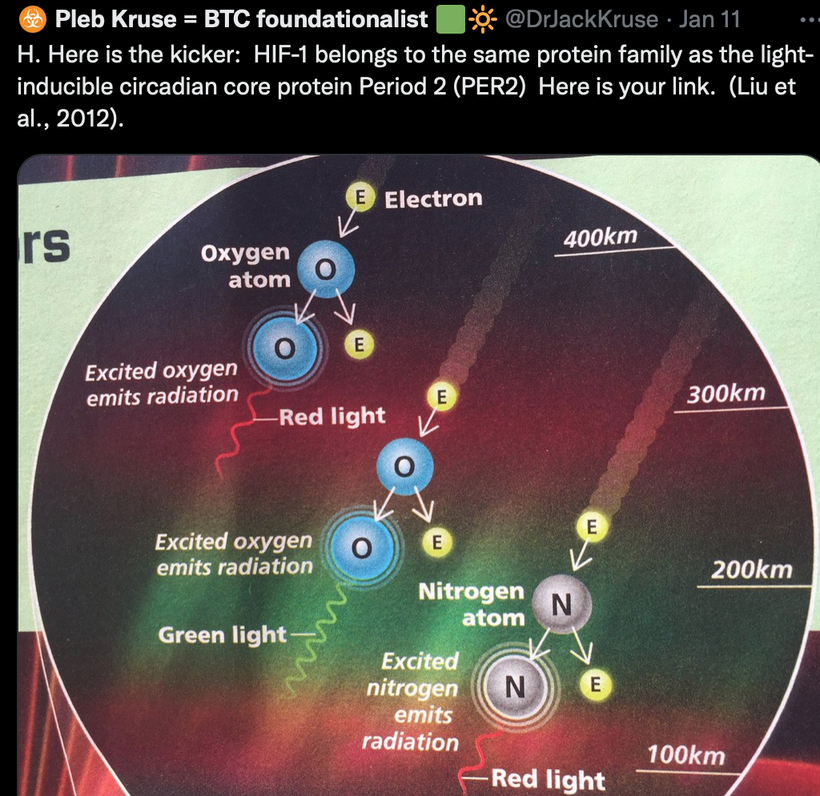
New Mechanism: Blood is a non-linear, cooperative system emitting biophotons via ROS reactions in heme proteins, sensitive to nnEMF/ALAN, which increase deuterium, widen biophoton spectra creating noise and reducing optical signaling, while disrupting regenerative currents (methemoglobin accumulation). Red light (drug equivalent per Tiina Karu), DDW, and methylene blue reduce deuterium, ROS, and methemoglobin, restoring ultraweak UV biophotons and lowering éR in tissues making oncogenesis less probable.
Therapeutic Implication: Solar/red light, DDW, grounding, and methylene blue reduce deuterium, ROS, and methemoglobin in blood, enhance ultraweak UV biophotons, stabilize mtDNA, and lower éR, mitigating disease in vulnerable haplotypes by re-aligning with normoxic adaptations that occured on Earth post KT event.
Few people have made the link of how green light during the KT event was the glue that connects us from the GOE and modern normoxic Earth. Look at the next two links carefully how green light stabilizes the IMM, RBCs, and the opsin system of eukaryotes.
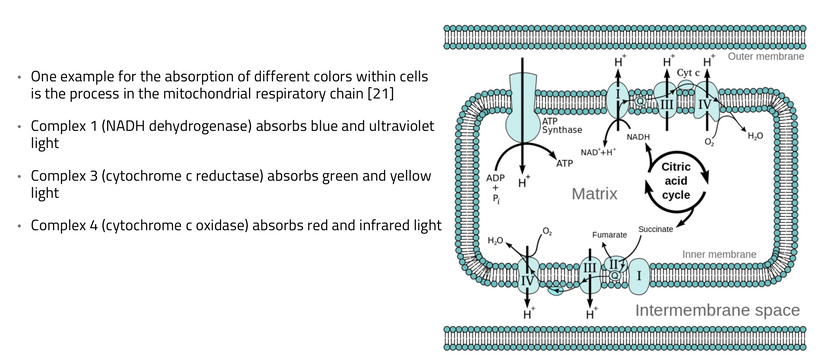
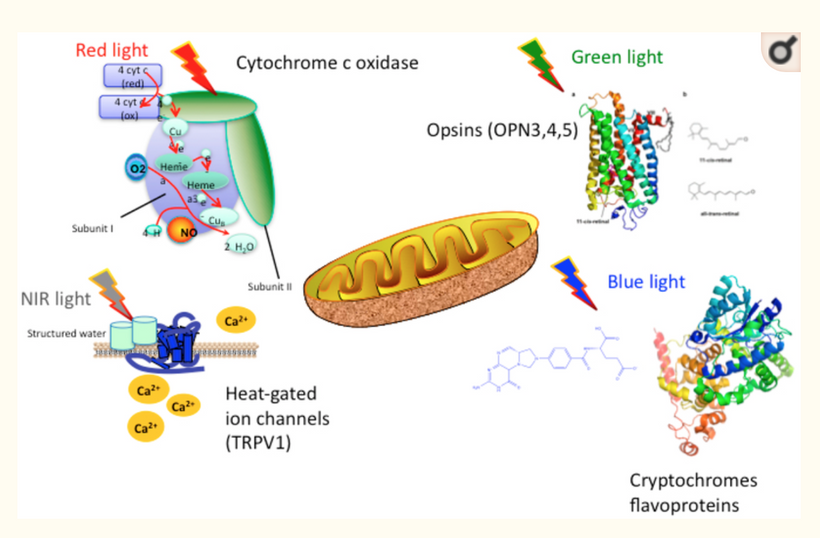
Sitting under trees on a sunny day is a free version of chemostherapy for many with cancers. Few get told to do this when they have a cancer like state that is a GOE like environment. This behavior also allows you to have massive exposure to NIR light as well. This is a double win for those with RBC pathology as the second slide shows.
Deuterium Depletion as a Cancer Therapy due to LIGHT STRESS
The new paper below in cites #2 provides real-world evidence for deuterium depletion’s therapeutic potential: integrating DDW into conventional cancer therapy significantly enhances survival, with a 75-80% reduction in cancer-related mortality. This aligns with Somlyai’s framework in his book, as DDW breaks the cycle of mitochondrial dysfunction, inflammation, and DNA instability by reducing deuterium’s kinetic effects. The study’s finding that survival correlates with DDW duration (r = 0.476, p < 0.001) and timing (better outcomes with earlier DDW adoption) underscores the importance of deuterium depletion in cancer management, supporting the mechanistic links to pH, voltage, and metabolic health in a “decentralized framework of medicine.”
Stressors of any origin (or any frequency), elevate mitochondrial deuterium, increasing water viscosity, slowing the ATP synthase nanomotor, and disrupting proton dynamics, leading to a pH drop and cellular depolarization. This triggers UCP amplification, collapsing the proton gradient, while COX-2 ramps up via inflammation from leaky barriers (gut, BBB, BRB, retina, testes etc) and high-deuterium metabolic pathways (e.g., glycolysis in cancer cells). The resulting “heavy protonicity” spreads to blood and CSF, distorting water networks and promoting DNA instability via deuterium-driven hydroxyl radicals.
Deuterium-depleted water (DDW), as shown in the new study, significantly enhances cancer survival (MST of 12.4 years vs. 2.4 years in the general Hungarian cancer population) by restoring mitochondrial function, stabilizing pH/voltage, reducing inflammation (e.g., COX-2), and protecting DNA.
HOW DDW AND UPEs LINK IN DECENTRALIZED MEDICINE
Deuterium depletion as a cancer therapy due to light stress cogently integrates with the decentralized photo-bioelectric thesis, where UPE spectra and coherence link to mitochondrial dynamics and metabolic resilience. Elevated deuterium from stressors like blue light increases waterviscosity, slowing ATP synthase and disrupting proton gradients, amplifying UPE spectra (e.g., intensified 634–703 nm peaks from singlet oxygen) as entropy markers, while DDW reduces viscosity, normalizing UPE emissionand restoring OXPHOS efficiency, as shown in the preprint’s 75–80% mortality reduction and survival correlation (r = 0.476, p < 0.001) (Somlyai et al., 2023; Somlyai, 2010).
Coherent red/NIR light enhances this by exciting CCO, reducing inflammation (COX-2), and stabilizing IMM oscillations (20–50 Hz to 100 Hz), synergizing withDDW to break the cycle of depolarization, UCP amplification, and DNA instability, complementing hemiflusome and nanotube function in managing photonic chaos (Hamblin, 2016; Agan et al., 2025). In jaundiced neonates orcancer patients, this strategy, combined with ketogenic diets, mitigates light stress-induced Warburg metabolism, reducing autism/EDS risks and underscoring sunlight’s role in decentralizing therapy (Ferguson et al., 2019).
NASA is now using a conination green & red light LEDs to help astronauts heal in space because of research done on kids with transgenerational pediatric brain tumors.
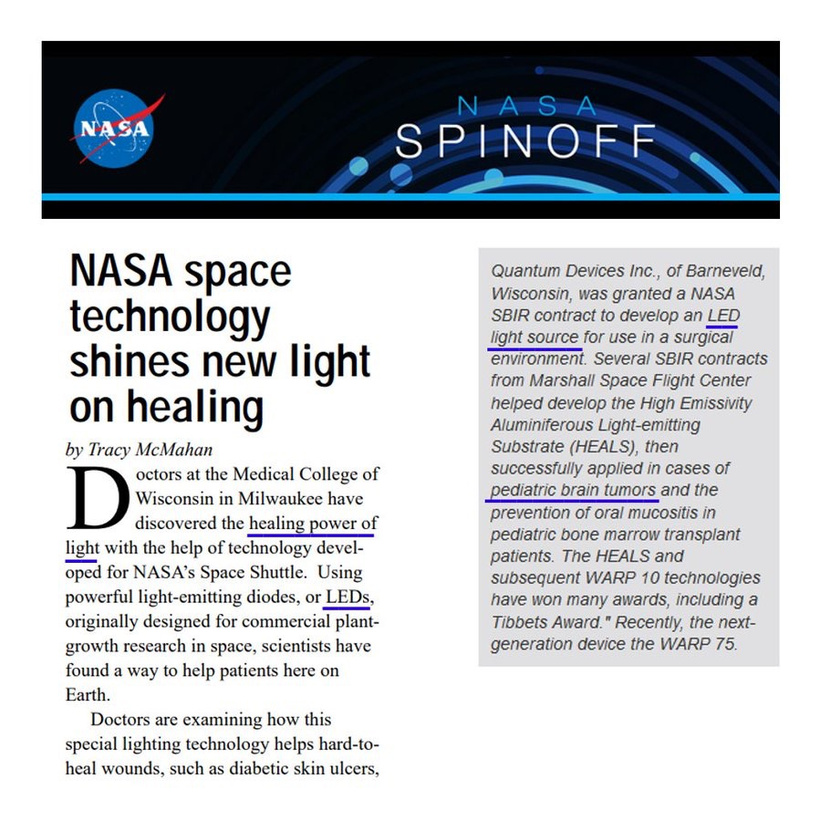
SUMMARY
Red light therapy (600-1000 nm) lowers mitochondrial water viscosity, which enhances ATP production, and reduces inflammation, while ketogenic diets reduce deuterium intake, supporting NAD+ levels and mitochondrial respiration. Together, these strategies, DDW, red light (IRA/NIR combo), with a circadian keto template, can break the cycle of mitochondrial dysfunction, systemic inflammation, and cancer progression related to light stress, aligning with Somlyai’s deuterium depletion framework and offering a promising therapeutic approach. Replacing the sun for PBM would offer better results, in my opinion because of its natural combination of green, IR-A and NIR light.
When Becker found that in complex eukaryotes RBC were time travelers and could bring us back to pluripotential cells it fully explaned how children could get cancers from their parents germlines and why astronauts could acquire cancer from space. Prior to his work for DARPA there was no cogent way of linking RBC de-differentiation back to primitive cells due to oxygen toxicity. For astronauts to make it Mars they will need to dissemble their cytochromes to stop ROS and RNS in the very same way germ cells do. Few people in NASA understand why this counterintuitive idea is axiomatic. Hopefully, now you do. Hopefully now you see why the use of HBO and ozone therapy in cancers are incredibly poor idea based in centralized thinking in a world filled with nnEMF.
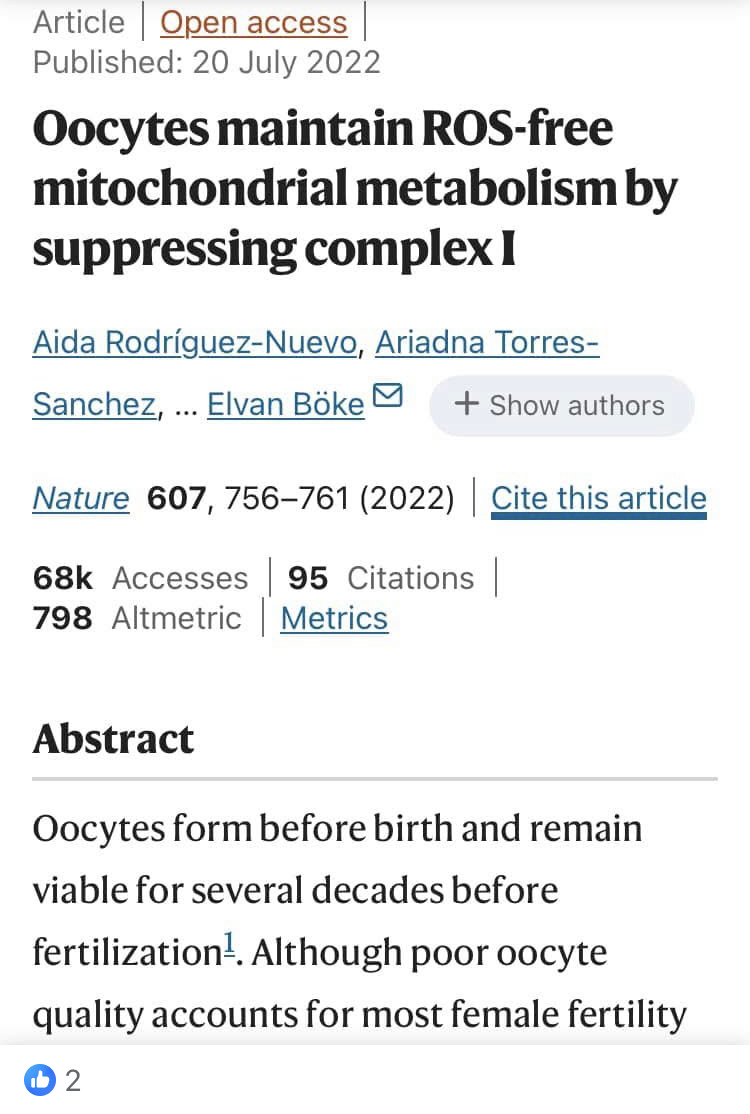
CITES
https://www.researchgate.net/public…arch_in_blood_reveals_its_holistic_properties